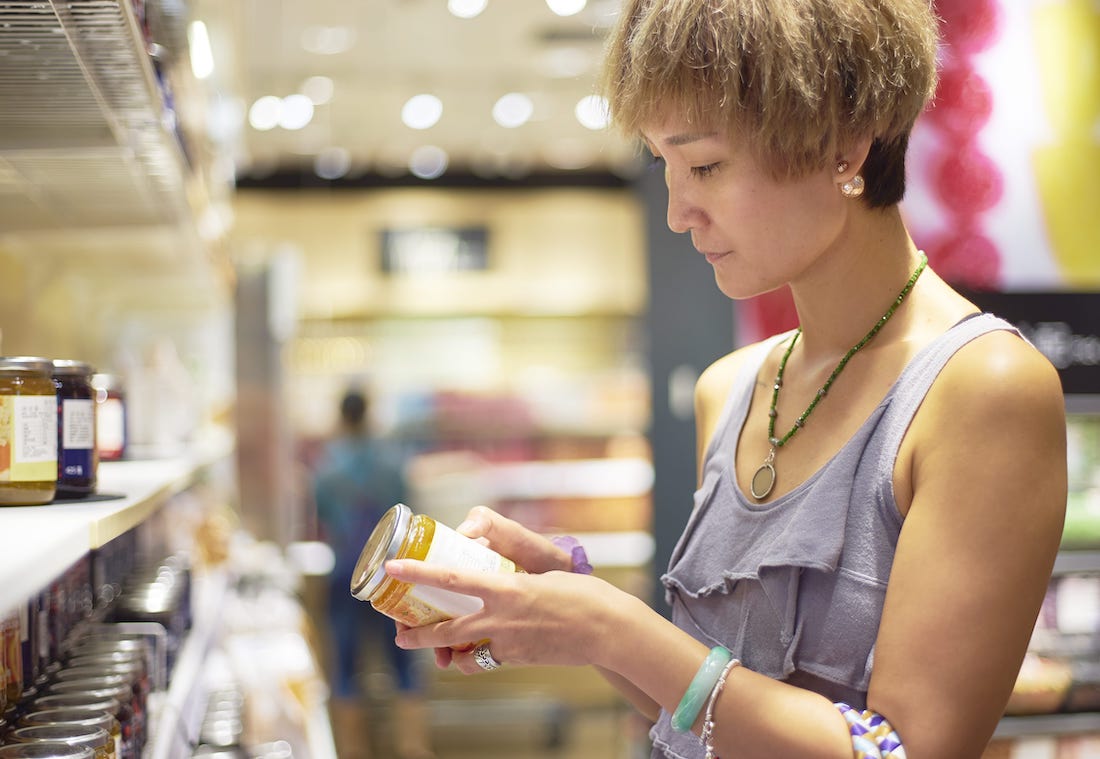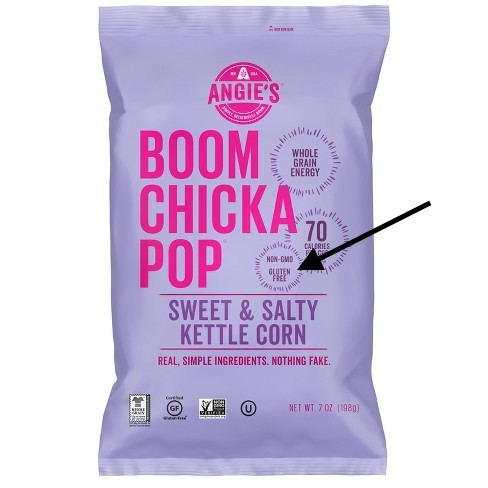This article is written by Erin Heidenreich, a registered dietitian nutritionist who provides support and counsel for people with celiac disease. All information adheres to the US federal regulations for gluten-free labeling found here.
You may think that figuring out if a product is gluten free would be simple. But, once you get into the ins and outs of label rules, it becomes a bit more complicated. Let’s break it down for you in 4 steps.
Step 1: Look for Certification Seals
When shopping for gluten-free products, look for any of the 5 certification seals shown below. These seals guarantee that the product has been tested by a third party and that the level of gluten is less than 10 parts per million (ppm). This is even stricter than the FDA requirement of 20 ppm.

These labels indicate that the product is both gluten-free and celiac safe, irrespective of any other statement or ingredient listed on the package.
Note: GFCO.org owns the first two seals, the second of which is being phased out and replaced by the first. You may still see the second seal on a product if the brand has not updated its packaging.
Step 2: Look for Gluten-Free Claims on the Label
If you see the words “gluten-free” on a label, that means the product has been tested to be less than 20 ppm. This is the acceptable amount of gluten for a product to be considered gluten free and celiac safe.
Read more: FDA Gluten-Free Label Regulations
Exception: Oats
There is but one exception to this rule. If a product is marked gluten free but contains oats or an oat-derived ingredient, people with celiac disease should avoid it.
But if it says gluten free on the label, isn’t that enough? Sadly, the answer is no. Oats are naturally gluten free, but due to the way they are processed, many oat products are a high risk for gluten cross-contact. For someone with a mild intolerance, a gluten-free label with oats is okay, but for celiacs, you’ll want to steer clear.
Step 3: Check for Gluten-Containing Ingredients
If the product does not have a gluten-free seal or is not marked gluten free, it’s time to break out the readers and examine the label yourself. Here’s what to watch out for when you do a check.
Gluten-Containing Ingredients
Here are a few of the more common gluten-containing ingredients you’ll find on a product label. Note that this is not an exhaustive list. To get complete coverage of all ingredients containing gluten, be sure to download our mobile app.
- Wheat
- Barley
- Rye
- Triticale
- Atta
- Bulgur
- Spelt
- Durum
- Einkorn
- Farina
- Emmer
- Farro
- Freekeh
- Graham
- Kamut
- Semolina
- Mir
Ingredients that May Contain Gluten
Unfortunately, the US has looser labeling requirements than many other countries when it comes to gluten. So how does this manifest on a food label?
The below list is comprised of ingredients that may be sourced from a gluten-free grain or gluten-containing grain. If a product has one of these ingredients, it must say gluten free on the package or company website to ensure gluten-free sources were used. When in doubt, leave it out.
- Brewer’s Yeast
- Asafoetida
- Bran
- Rice syrup
- Coloring
- Dextrin
- Filler
- Germ
- Miso
- Starch
- Vegetable gum
- Maltodextrin
- Malt
Again, this is not an exhaustive list of ingredients, but you can find one on the Spoonful app.
Step 4: Check the Allergen Statements
Contains
The contains line is a mandatory statement that will list any of the top 8 allergens in the product. If the food has eggs, wheat, dairy, soy, tree nuts, peanuts, shellfish, or fish, it MUST be listed.

Notice though, this does not include barley or rye. This means that an item may say Contains: Egg, Milk, Soy, but still not be gluten-free because it contains barley.
Manufactured Statement
The manufactured statement is a VOLUNTARY statement put on by the manufacturer. It may say something like:
- Made in a facility with ___
- Made on shared lines with ____
- Processed in a factory with____
If an item doesn’t have this statement, that doesn’t mean it doesn’t apply. In general, the risk of an item being produced in a gluten-free facility and not being safe is low. But, these are things to take into consideration and decide what you are most comfortable with.
Conclusion
I hope this 4-step guide helps you better navigate labels and find new gluten-free food options. If you’re looking for more help or having trouble making sense of it all, I highly recommend trying the Spoonful app. It is something I helped develop from the perspective of a celiac patient, which means it takes all of the above information into mind when you scan a food label.



So a question about Oats: If something contains Oats, but has the Certified Gluten Free logo, can I trust that product as someone with Celiac Disease?
From the above article:
Exception: Oats
There is but one exception to this rule. If a product is marked gluten free but contains oats or an oat-derived ingredient, people with celiac disease should avoid it.
But if it says gluten free on the label, isn’t that enough? Sadly, the answer is no. Oats are naturally gluten free, but due to the way they are processed, many oat products are a high risk for gluten cross-contact. For someone with a mild intolerance, a gluten-free label with oats is okay, but for celiacs, you’ll want to steer clear.
Yep! You can trust that product.
Question about oats. I read the FDA’s rule and it says that any food above 20ppm cannot be labeled gluten-free, no exception. Therefore, oats labeled gluten-free must be below 20ppm and therefore safe for people with celiac disease. Do you have more information about why you list oats as an exception? Thanks.
Hey Mary! That is true, the FDA does regulate all products with the GF labels to be <20ppm which is the accepted amount to be safe for someone with celiac. But, since oats are the highest risk for cross-contact, we recommend taking the extra precaution and using oats that are either labeled as gluten-free OR the product is certified gluten-free.
Do some Celiacs react to even “purely protocol” oats? Meaning…do some celiacs react to even pure uncontaminated oats? I was told that in other countries oats are on the no list for Celiacs.
Hey Julie! Its possible, but that would likely be related to an oat sensitivity (or intolerance) and not celiac disease. If you think you may have a reaction to oats I would chat with your doctor or a Registered Dietitian.
I’m confused about your recommendations on avoiding Oats for GF celiac diet. I’m new at this, so trying to make sense of it all has been overwhelming. If it says GF on package, it must be safe as it cannot contain above a certain amount to be labeled as such?